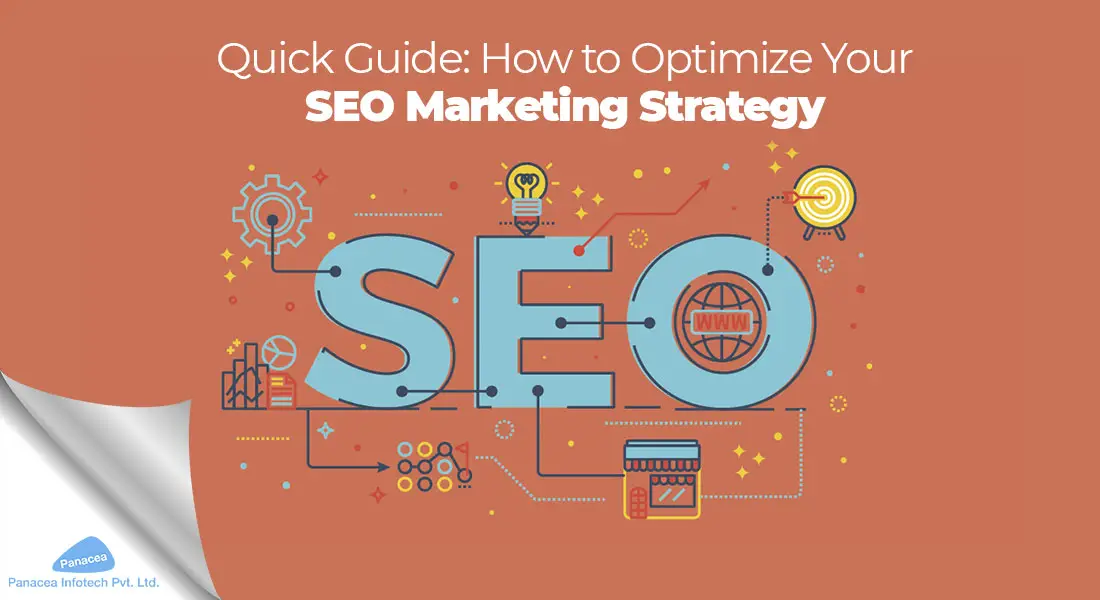As you are searching the ways to optimize your SEO marketing strategy, this proves that you are very well aware of the importance of Search Engine Optimization (SEO). You grasp the idea and try to implement the same to converge online achievement. But you run out of ideas in knowing how to best use SEO.
Well, you need not worry, as you are not alone in the field. Many businesses are battling and putting efforts into getting the results. In order to clear the air, we are going to discuss how you can optimize your SEO marketing strategies with ease.
Read on.
Here’s How to Optimize Your SEO Marketing Strategy
Before continuing with the topic, you need to understand that SEO optimization is more like science. To make the most of it, you have to be clear about the concept. Expecting a sudden positive result will only boost headaches, as it takes time to settle with the process. Coming to the creative side, your website should portray high-quality content.
As the end goal of SEO optimization is to find a top place on Google’s first page, you need to be patient and stay updated with the latest algorithm.
Ranking on page #1 and getting more clicks brings many added benefits in your bucket; like it increases:
-
Reach
-
Authority
-
Credibility
-
Sales
-
Recognition
1. Keywords first
The keyword is the king. Expecting to rank without it is like trying to ride a bike without fuel. Introducing high-quality content with relevant keywords is the cherry on the top. But this doesn’t mean to encourage keyword stuffing. You must figure out the particular keywords for which you wish your website to rank. Therefore, choosing the right keywords to rank is a must.
Now you ask how to identify the right keywords for your brand? Well, the following three steps will guide you:
-
Performing competitors’ analysis will help – For this, you can take help you SEO tool, MOZ. It looks after your website’s Domain Authority (DA) and range it between 1 to 100. Mind it, the higher the number higher will be your domain authority. With this, you can compare your competitors’ ranking and then look for keywords with high volume.
-
Construct relevant keyword map – As now you know which keywords are ranking and which are not, now comes the turn of building an appropriate keyword map. It will serve as a blueprint for your website and content. Figure out the keywords with ideal keyword difficulty and good search volume using tools like Google Adwords, SEMrush, or Ahrefs.
-
Start optimizing it for on-page content – Now, as you know how to build high-quality content with the proper use of relevant keywords, divert your attention towards practicing optimization of your website page for both search engines and viewers. Here’s how you can do that:
-
Mention the primary keywords within the first 100 words.
-
Write blog title in H1, subheadings in H2, and so on.
-
Make better use of internal and external links.
-
Optimize URLs.
-
Keyword frequency should be kept high (avoid keyword stuffing).
-
Write keyword-rich meta description. If possible, use the relevant keyword within 150 characters.
2. Utilize internal & external linking for better SEO reach
Make sure your page includes the quality and right quantity of internal and external links. It helps in measuring your website’s domain authority. By doing this, you improve the rankings of your internal pages as well as external pages. Also, you don’t want your page to feel left out without any internal links. The below points will help in boosting your internal linking efforts:
-
Cross-linking your content with your other company blogs or websites
-
Local business listings
-
Mention your social profile links, no matter whether you have a good number of followers or not
-
Social share/mentions
-
Press releases
3. Do not ignore schema markup
Schema markup, also known as element markup, is a new form of optimization being used in digital marketing strategy. It is a code added to your site to help web crawlers pull more valuable data for the searchers. It tells Google what your website is about, rather than what it says. If we consider any eCommerce website, then element markups can display:
-
Products' price
-
Star rating
-
Stock status
And much such information can be displayed, which can increase your CTRs.
4. Avoid Technical Issues
Any website with SEO technical issues can hamper your site’s visibility. Make sure no such problems are present on your website. Do regular website audit. Check out the reasons that may lead to technical issues below:
-
Missing page title, H1 tags, and meta descriptions
-
Duplicate page titles
-
404 pages and links to redirected URLs
5. Canonicals
A canonical tag is a great way of informing web crawlers that a particular URL represents the master copy of a page. By using a canonical tag, you can overcome the issue of duplicacy from appearing on several URLs. Some of the best practices are:
-
Use self-referential canonical tags
-
Canonicalize the home-page
-
Avoiding mixed signals
-
Spot-checking dynamic canonical tags and more
Conclusion
With this, you might have understood the importance of optimizing your SEO marketing strategy.
Before taking your leave, we would like to ask you a question. Are you looking forward to hiring one of the best companies that provide SEO services? If you nodded to yes, Panacea Infotech is the company where your search should end.
Let’s connect to discuss business.






